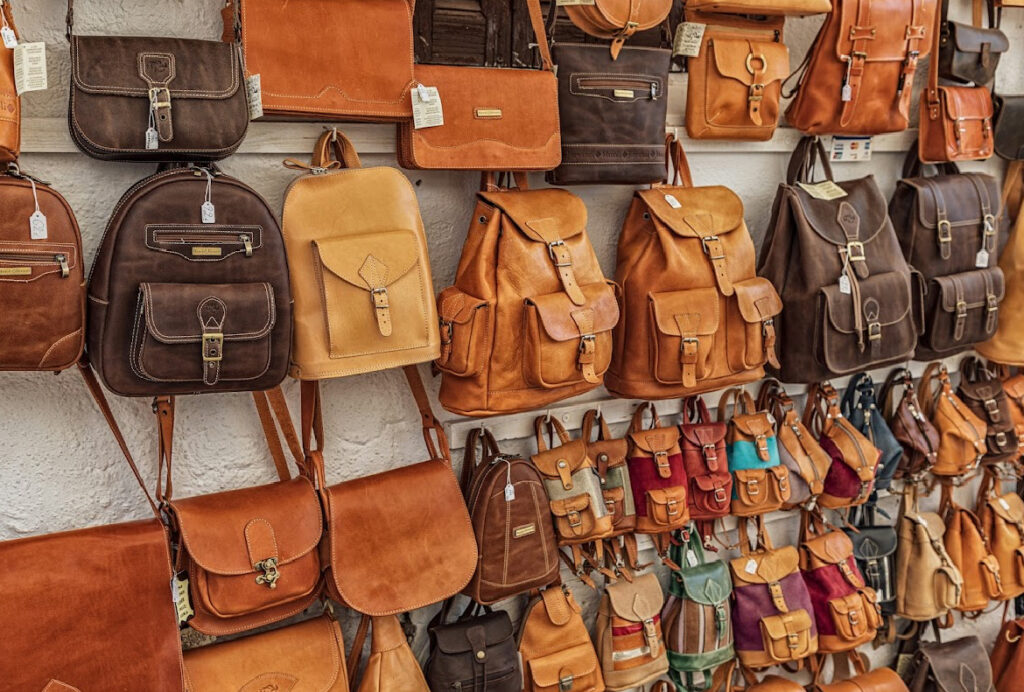From handbag digital passports to spelling mistakes on logos – expert shares telltale signs of fake designer bags in 2024

The fake designer goods market has continued to grow in recent years, with some sources suggesting up to 10% of all designer goods sold are fake and 80% of us have purchased a fake (knowingly or unknowingly) at some stage in our lives (2).
With the rise of social media and third-party ecommerce platforms it can be increasingly difficult to verify the true source of the item you are looking to purchase and tell if it is an authentic designer piece. UK data shows 9,220 people each month search Google to find out how to tell if their designer bags are real, this has risen 5% in the past three months (3). Assistant Press Manager at premium fashion brand Fairfax & Favor, Charlie Cooke, shares her expert guidance for spotting a fake. Take a look:
“Poor stitching: This may be frayed, inconsistent with brand norms or even coming loose from the bag. Stitching is a construction element which is hard to replicate high quality for, as by nature imitators will cut corners and not put the time into getting this right or have the same level of skill from the garment worker.
Suspicious packaging: When you pay for a luxury item you expect the packaging to be of premium quality, a surefire way to spot a fake is by examining the box it comes in – if it comes in a box at all. Is the box consistent with the brand’s usual packaging or does something look amiss? Is there a logo and clear markers of official packaging? Usually luxury bags will come with a dustbag to allow you to keep the item protected when storing, if this is missing from a new item you should inquire as to why.
Spelling mistakes: Poor spelling on logos, taglines and care instructions is a telltale sign that a product is a fake. Take the time to read over everything on the item before making the purchase, do due diligence online or in a store to find out as much information as you can and see if there are clear images of the product which look genuine.
Lack of manufacturing and care instructions: A lack of labels in general is usually another bad sign. Products should always have care instructions provided whether on the tag or on a card provided in the item packaging. If no care instructions are provided at all, this is a sign the item could be fake or pre-owned.
Bought from an unknown source or website: Most brands inform shoppers of their pre-approved stockists, meaning if you are not buying from an official stockist or the brand’s own website or store, you should question the authenticity of the product. You can always email the brand’s customer service directly to query if a stockist is legitimate.
No unique identifier codes: Certain designer handbags feature unique identifier codes per item, meaning no two have the same code. This can be used to check with the brand itself for the credibility of the item. RFID tags are being used amongst many premium brands more recently, these can hold information of which retailer the item was sold from and which store location it was purchased at. The European Commission is also planning to introduce Digital Product Passports from 2024 (4), which will see products in industries including fashion and manufacturing have obligatory documentation for products which lists supply chain information and origins of the product composition in line with EU regulation.
Off branding and incorrect fonts: You should carefully check the logos featured on your handbag, whether as part of a print, on the inside tag or on any packaging. Do the logos and fonts look correct when compared against real items or the brand’s online logos? Do the logo colours used look like shades typically used by the brand? Simple mistakes can be the hallmarks of a fake product.
Fabric and composition: If it is a leather handbag you are checking the validity of, you may be able to tell if the leather used is of a lower grain by the feel and texture. Imitation leather feels smoother, more plastic like. A lower quality or fake leather will be colder to the touch and typically is less flexible than high-grain leather, which is usually softer and more pliable. Higher quality leather may have stamps of approval on genuine products also, such as BLC certification stamps.
Poor quality hardware: You can usually tell the difference between hardware which is poor quality metal and which is of a better quality such as gold or silver. Poorer quality hardware will be less scratch resistant and will fade over time. Gold painted hardware can flake and degrade quite quickly, showing the poor quality composition of your fake.
The silhouette or colourway can’t be found elsewhere: Brands may offer exclusives and special edition items from time to time, however you should check for release information from the brand to ensure you aren’t buying a fake that looks like a silhouette they have never produced. Search online for the style to see any news announcements for the colourway or print of your item to see if it is a likely style they have genuinely produced.”
The impact of buying fake goods:
“Buying fakes not only impacts a brand’s reputation and sales but also leads to rogue manufacturers working outside of safe working practices. A black market of designer goods can mean missed health and safety practices being enforced in the manufacturers workplaces, as well as no guarantee of worker’s rights being protected in terms of working hours and compensation. The goods themselves also have not been made to UK high standards of quality assurance, meaning toxic chemicals or harmful substances could be found on your item without you being aware. The quality of the product itself will not match the genuine manufacturer so you cannot expect the same lasting wear and value for money. You also cannot rely on a warranty if something goes wrong. You should always do thorough research to check where you are buying a premium handbag from and ensure it’s from a reputable stockist.”




